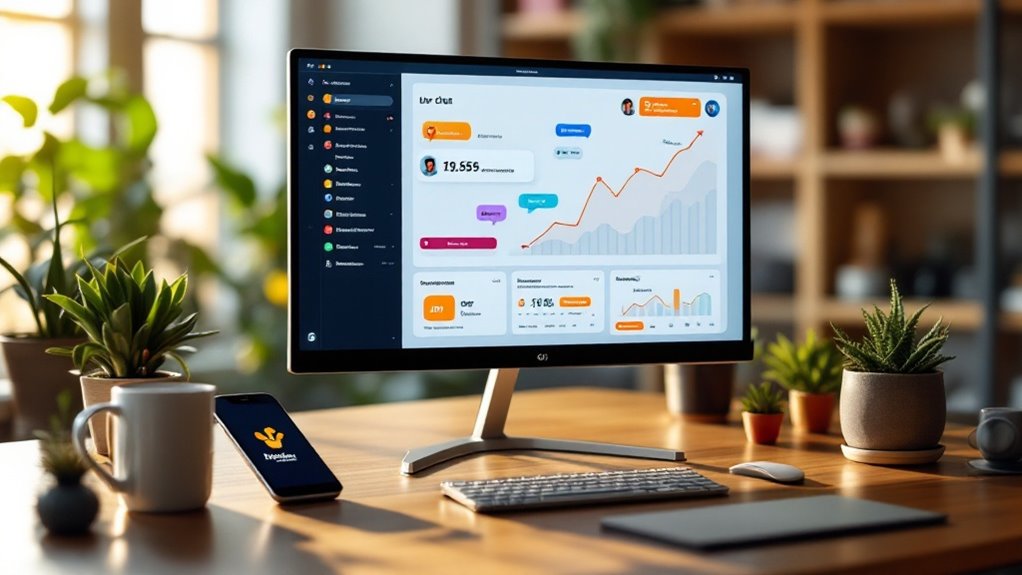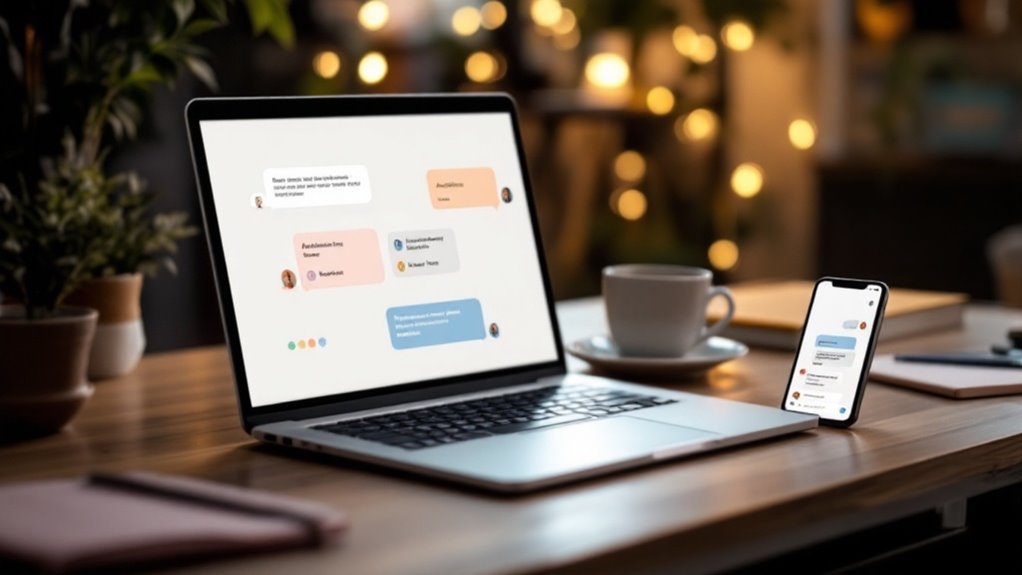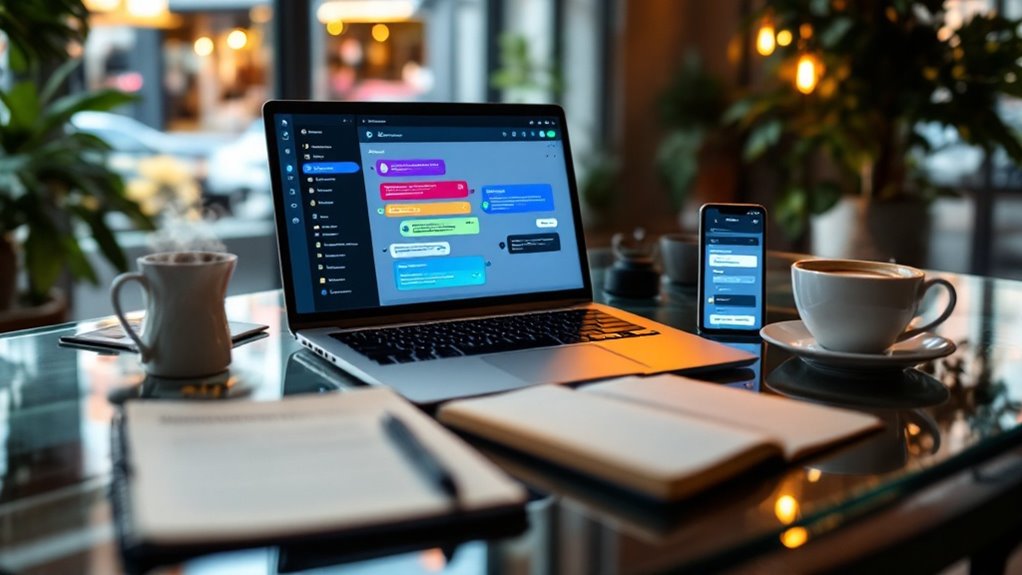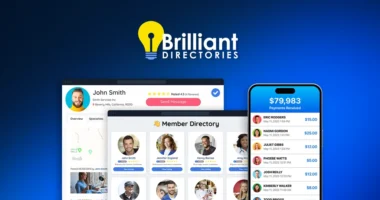Small businesses seeking live chat software should consider top-rated platforms like LiveChat, HubSpot Live Chat, and Tidio. These solutions offer essential features including real-time messaging, CRM integration, and basic chatbot automation, with pricing ranging from free plans to $20 per agent monthly. LiveChat stands out for its extensive customization options, while HubSpot provides robust CRM integration, and Tidio offers AI capabilities. Understanding each platform’s unique strengths helps businesses make an informed choice that aligns with their specific needs and budget.
Quick Overview
- Tidio offers a free plan for up to 3 users with AI chatbots, making it an accessible choice for small businesses.
- HubSpot Live Chat provides free CRM integration and basic features, perfect for businesses starting with customer engagement.
- LiveChat’s $20/agent/month plan delivers comprehensive features and integrates with 200+ tools for growing businesses.
- Brevo Conversations starts at $19/month and includes marketing automation tools essential for small business growth.
- Free trials lasting 7-14 days allow small businesses to test features before committing to paid plans.
Why Live Chat Software Is Essential for Modern Business Growth

As businesses navigate the increasingly digital marketplace, live chat software has emerged as a critical tool for driving growth and maintaining competitive advantage.
Studies show that 79% of businesses report positive impacts on sales and revenue after implementing live chat, while customers who engage through chat spend 4.5 times more than non-chatting visitors.
Live chat implementation drives remarkable revenue growth, with chatting customers spending 4.5x more than their non-chatting counterparts.
The benefits extend beyond sales performance. Live chat delivers cost-effective customer service, operating at 17-30% lower costs than traditional phone support. With projected growth from $1.21 billion to $2.06 billion by 2029, the market’s rapid expansion reflects its increasing importance for businesses.
It enables businesses to provide real-time assistance while gathering valuable customer data and insights.
With 85% of customers reporting satisfaction with live chat interactions and 56% of young consumers preferring it over phone service, this technology has become essential for meeting modern customer expectations and driving sustainable business growth in today’s digital landscape.
Top Live Chat Platforms Compared: Features and Pricing
While maneuvering through the live chat software market can feel overwhelming, several standout platforms offer distinct advantages for small businesses. Cost-effective solutions range from free plans to premium options under $30 per agent monthly, making them accessible for growing companies.
Leading platforms distinguish themselves through these key features:
- LiveChat offers robust customization and integration with 200+ tools, starting at $20/agent/month.
- HubSpot Live Chat provides seamless CRM integration with a free plan option, ideal for sales-focused teams.
- Tidio stands out with AI chatbots and multi-language support, offering a free plan for 3 users.
- Brevo Conversations delivers multichannel messaging capabilities and marketing automation features from $19/month.
Each platform balances functionality with affordability, allowing small businesses to choose based on their specific communication needs and growth goals. Implementing these solutions can help businesses achieve a 12% conversion increase through improved customer engagement.
Critical Features to Look for in Live Chat Software

Selecting the right live chat software begins with understanding which features directly impact business success. Small businesses should prioritize five essential capabilities:
Choosing effective live chat software requires identifying key features that drive real business results and align with core operational needs.
- Real-time communication tools, including instant messaging, typing indicators, and file sharing capabilities.
- Customization options that allow businesses to match their brand identity through personalized chat widgets and custom greetings.
- Basic automation features, such as chatbots and automated responses, to handle routine inquiries when staff isn’t available.
- Integration possibilities with existing business tools, particularly CRM systems and e-commerce platforms.
- Analytics and reporting functions that track visitor behavior, chat metrics, and agent performance.
These core features help small businesses enhance customer service while maximizing their return on investment. With affordable solutions starting at seven dollars monthly, small businesses can access professional live chat capabilities without straining their budget.
Advanced features like video chat and AI-powered routing can be valuable additions as the business grows.
How to Choose the Right Live Chat Solution for Your Budget
Making an informed decision about live chat software requires careful evaluation of both business requirements and financial constraints. Small businesses should assess their needs and compare pricing models carefully before committing to a solution. Modern solutions like LiveChat and Zendesk offer comprehensive support tools for growing businesses.
- Most providers offer free trials lasting 7-14 days, allowing hands-on testing of features and usability.
- Paid plans typically range from $15-60 per agent monthly, with free options limited to 1-3 agents.
- Live chat solutions can reduce phone support costs by 30% while increasing sales conversions by 20%.
- Hidden costs may include chatbot add-ons, storage limits, and integration fees.
Before making a final decision, businesses should calculate the total cost of ownership and consider their growth projections.
Taking advantage of free trials helps guarantee the selected solution meets both current needs and future scalability requirements while staying within budget constraints.
Implementing Live Chat: Steps to Maximize Customer Engagement

Once a business has chosen the right live chat software, successful implementation becomes the next key focus. A systematic approach guarantees maximum customer engagement and team efficiency. Studies show that providing undivided attention to customers during live chat interactions significantly enhances the overall support experience.
| Implementation Step | Key Actions |
|---|---|
| Initial Setup | Configure chat widget, brand colors, welcome message |
| Team Preparation | Train staff on software, develop response guidelines |
| Process Integration | Connect with CRM, set up ticket creation system |
| Customer Experience | Create canned responses, establish chat triggers |
| Performance Tracking | Monitor metrics, analyze chat transcripts |
The implementation process requires careful attention to both technical and human elements. Support teams need extensive training on chat etiquette and response protocols, while the software must be properly configured to match brand standards. Regular monitoring and optimization guarantee the system continues to meet customer needs and business objectives effectively.
Frequently Asked Questions
How Long Does It Take to Train Staff to Use Live Chat Effectively?
Staff typically need 1-2 weeks to gain basic live chat proficiency, with advanced mastery taking 4-6 weeks.
Initial training requires 8-16 hours of focused instruction covering chat etiquette, product knowledge, and software basics. Most agents reach competency within their first month, though training time varies based on experience and system complexity.
Ongoing training of 1-2 hours weekly helps maintain and improve skills through role-playing and shadowing experienced agents.
Can Live Chat Software Work Offline When Internet Connectivity Is Unstable?
Yes, many modern live chat software platforms offer offline functionality.
When internet connectivity becomes unstable, these systems can store messages locally on the device and automatically sync them once the connection is restored.
Some solutions even utilize alternative communication methods like Bluetooth or WiFi Direct for offline messaging.
While offline features may have limited capabilities compared to online mode, they guarantee businesses can maintain customer communication during internet outages or in areas with poor connectivity.
What Happens to Chat Transcripts After Conversations End?
Like a digital filing cabinet that never loses paperwork, chat transcripts are automatically saved in the software’s database after conversations end.
These records are:
- Stored securely with encryption
- Searchable through admin dashboards
- Exportable to CSV/PDF formats
- Available for customer access via email or download
- Used for quality assurance and analysis
- Retained according to provider policies (30 days to permanent)
- Protected under data privacy regulations
Most systems allow businesses to review transcripts for training and improvement purposes.
Are There Limits on Concurrent Chat Sessions per Agent?
Most live chat platforms allow administrators to set limits on concurrent chat sessions per agent.
Industry best practices typically recommend 3-5 simultaneous chats for experienced agents, while new agents often start with 1-2 chats.
These limits help maintain service quality and prevent agent burnout.
Factors affecting ideal concurrent chat limits include:
- Agent experience level
- Query complexity
- Available support tools
- Business type and requirements
- Peak chat volumes
How Do Seasonal Business Fluctuations Affect Live Chat Software Pricing?
Seasonal business fluctuations greatly impact live chat software pricing through several key factors.
During peak periods (September-January), businesses often need to adjust their pricing plans to accommodate 50-100% increases in chat volume.
Pay-per-agent models offer flexibility to scale up or down, while volume-based pricing may require temporary upgrades.
Many providers offer hybrid solutions combining fixed subscriptions with seasonal add-ons.
Cloud-based platforms enable quick scaling without long-term commitments.
Conclusion
While some business owners worry that live chat software might feel impersonal, today’s intelligent platforms create natural, engaging conversations that customers prefer. By selecting the right live chat solution and implementing it thoughtfully, small businesses can deliver prompt support, capture more leads, and build lasting customer relationships – all while saving time and resources. The path to modern customer service excellence begins with a simple chat window.








